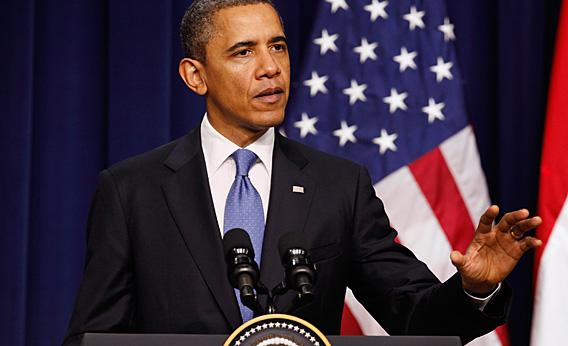With Mitt Romney’s almost certain win in New Hampshire next week, the race for the White House has now resolved to what was predicted almost a year ago: Mitt vs. Barack. The more extreme and entirely irrational voices of the Republican Party have nearly burned out, and the Republicans will be offering up a rather bland and opportunistic middle-of-the-roader who nonetheless has a credible record in the big leagues of private equity and as a one-term governor of Massachusetts.* Romney has successfully navigated a minefield of debates and attacks from the right without marginalizing himself so that he lost his capacity to appeal to the undecided voters who will determine the election in November. So let’s be clear: Democrats cannot easily dismiss Mitt Romney. This will be a tight race, and the economic data of the late spring and summer will help determine the emotional state of the electorate.
So how will Obama approach the contest? His good news: We are out of Iraq; Bin Laden is dead; DADT is gone; we avoided an economic cataclysm (often by doing the wrong thing) and kept the auto industry alive; the economy is beginning to create jobs (note the 200,000 private-sector jobs reported today and an unemployment rate that has dropped to 8.5 percent); and health care reform was enacted.
Yet the crisis of the middle class continues unabated; the wages in new manufacturing jobs are far below what is needed to support middle-class living; the mortgage crisis continues, depressing the middle class; poverty is increasing; social mobility is down; and there are enough storm clouds on the horizon—a European recession in particular—that Americans are extremely anxious.
Put another way: We have addressed the crisis, but not the trend line. We dodged the worst immediate impacts of the converging multiple crises of the economy from 2008-09, but the longer term crises of declining middle-class income and increasing wealth disparity continue. So the president needs to confront these head on. He needs an agenda focused on two issues: equity and opportunity.
It is time to transition from repairing the enormous structural damage done by the cataclysm the president inherited to establishing policies to restore the American middle class, reduce inequality, and improve America’s competitiveness. Here are two ideas for him to consider.
First, an idea that will not only generate greater equity and simplicity in the tax code but also create a powerful ideological divide between the president and Romney. The president should propose treating capital gains as ordinary income. The preference given to capital gains—now taxed at a mere 15 percent even for those in the top income brackets—serves no economic purpose, and magnifies the inequity in the tax code. Why give any preference to income that results from the sale of an appreciated asset as opposed to income that is the product of work? There is no compelling answer to this question, and absolutely no credible evidence that investment will be hindered if the capital-gains preference is eliminated.
Indeed, the Bowles-Simpson report suggested the elimination of the capital-gains preference, and the Bipartisan Policy Center, which is chock-full of prominent government officials of both parties and private-sector executives, has also endorsed the idea. Bizarrely, the Republicans are going in just the opposite direction: They want to eliminate all taxation of dividends and capital gains, thus increasing inequity.
Second, the moment is ripe for investment in education. We all know that the era of competition based on intellectual capital is upon us, and the United States is at great risk of falling behind China, India, and Europe. One problem magnifying this is the burden of student debt, which is surging as entry-level jobs are either unavailable or exist only at wage levels insufficient to cover debt payoffs. The president should embrace an idea originally proposed by Milton Friedman and James Tobin, recently pushed by Robert Reich in his wonderful book Aftershock, as well as by me here in Slate two years ago. It’s simple: Have the government pay for college education for students in return for an agreed-upon repayment of a fixed percentage of post-graduate income. The beauty of this is that all barriers to education are eliminated. Everybody can go: No cash is needed up front. And the magnitude of your repayment is calibrated to what you earn, permitting freedom of choice with respect to jobs. Does this require those who earn more to pay more? Yes, but that is a fair transaction. Repayment is calibrated to the payback you get from the education. The numbers can be arranged such that the government is made entirely whole and educational opportunities are increased exponentially. And we would eliminate the problem of student debt that now crushes opportunity.
*Correction, Jan. 7, 2012: This article originally incorrectly referred to Mitt Romney as a two-term governor. (Return.)
